Best Stratocasters 2025: Top Strat picks from Fender and Squier
Our experts countdown the best Strat guitars - from budget to pro - that showcase arguably the most iconic guitar of all time
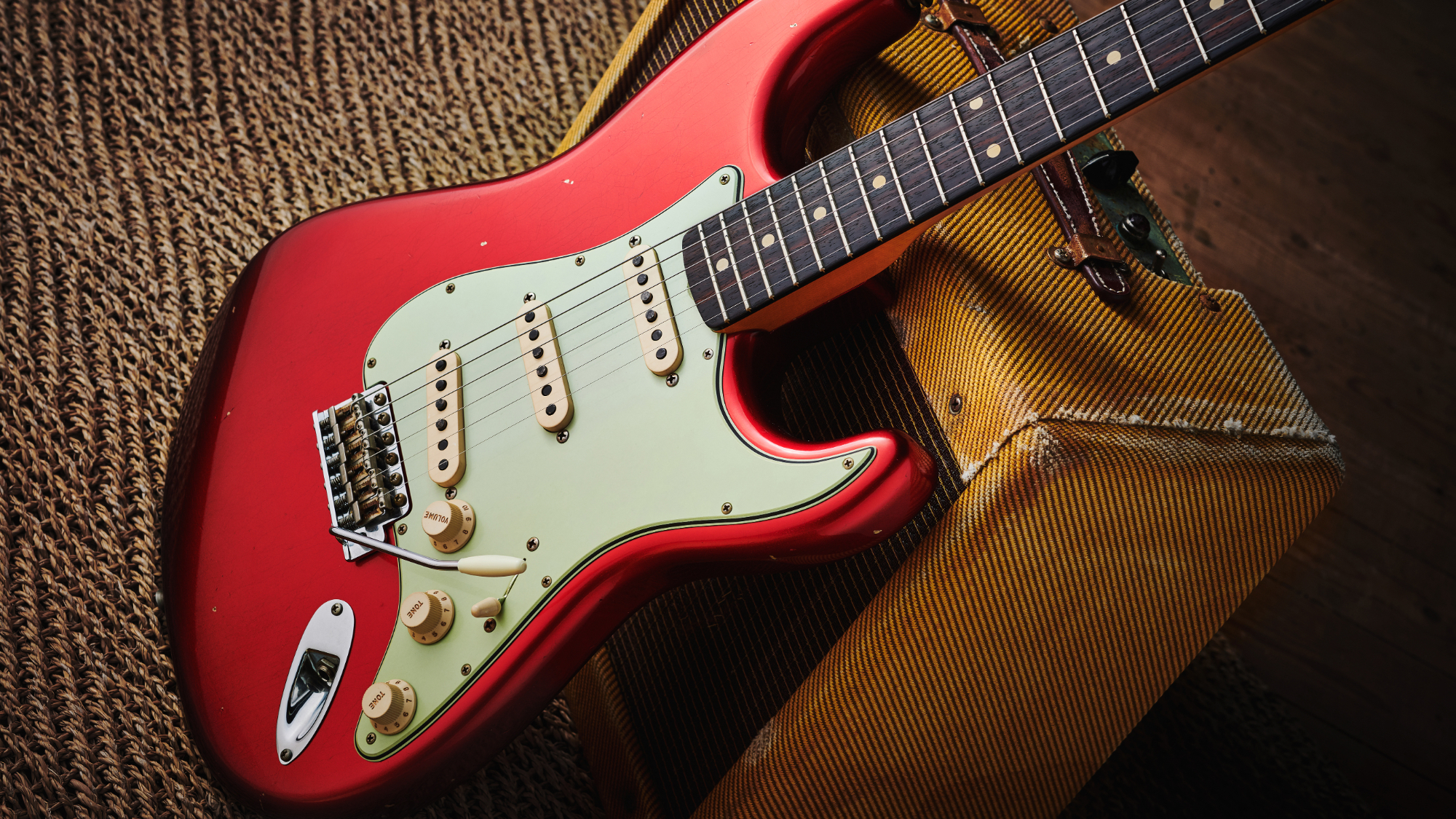
Ask any non-musician to draw a guitar and chances are they’ll come up with the iconic double-cut shape of a Stratocaster. Possibly the most popular musical instrument of all time, Leo Fender’s innovative electric guitar continues to age like a fine wine, finding new fans with each generation of guitarists. Since its popularity continues to grow, I've set out to find which are the best Stratocasters you can buy today.
An evolution of the Telecaster - the first mass-manufactured solid-body electric guitar - the Fender Strat was designed to be lighter and more player-friendly than its dual pickup predecessor. Adding a tremolo, a trio of single-coil pickups and a thinner, more contoured body shape, the Stratocaster was an instant hit.
Since its launch in 1954, the Fender Strat has come to redefine the public’s expectations of what an electric guitar is, leading to countless imitators and a list of players that quite literally make up the Rock And Roll Hall Of Fame. From Jimi Hendrix, Eric Clapton and Stevie Ray Vaughan, to modern heroes such as John Mayer and Cory Wong, the versatility of the Stratocaster has captured the imaginations of guitarists through the decades.
There are a lot of different types of Stratocaster you can buy, with nearly every aspect of the instrument being customised over the years - everything from pickups to neck profiles, hardware and finishes. Even Squier has joined the game, producing multiple ranges of affordable, great-quality Stratocasters. The choice for players has never been better.
So which is the best Strat for you? Well, my top pick right now goes to the Fender American Ultra II HSS Stratocaster which marries old school charm with a contemporary twist. It boasts a wide range of tones and looks the business too. But fret not, I've included some more affordable models from both Fender and Squier in this. guide, too.
Our top picks
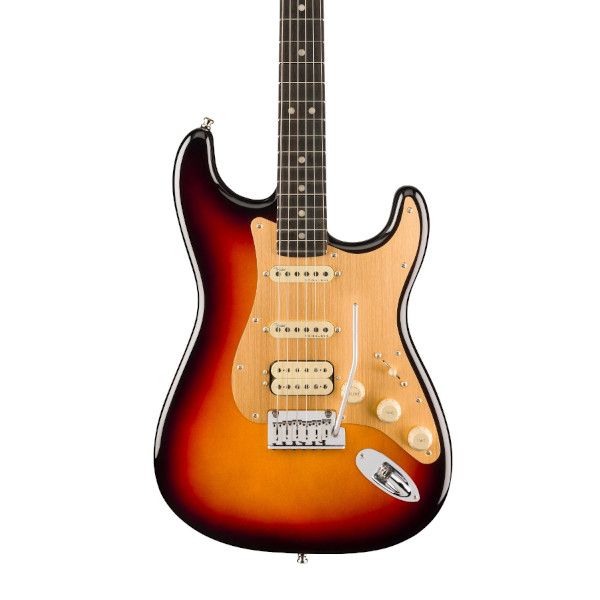
The Ultra II is the guitar equivalent of a muscle car, and with the latest in the series, Fender has fine-tuned this instrument into one of the best-playing Strats ever. While testing, I loved the 10" - 14" fingerboard radius which made for a slick and comfortable experience. It's finished in hard-wearing urethane and it's a Strat perfectly suited for the modern player.

Available in SSS and HSS pickup layouts, the Squier Affinity packs in a lot of Stratocaster goodness for such a low price. OK, so you're never going to mistake every Affinity in a lineup for a USA-built Fender, but in my opinion, this is serious giggable guitar that'll set you on the road to brand loyalty, just as crafty old Fender intended.
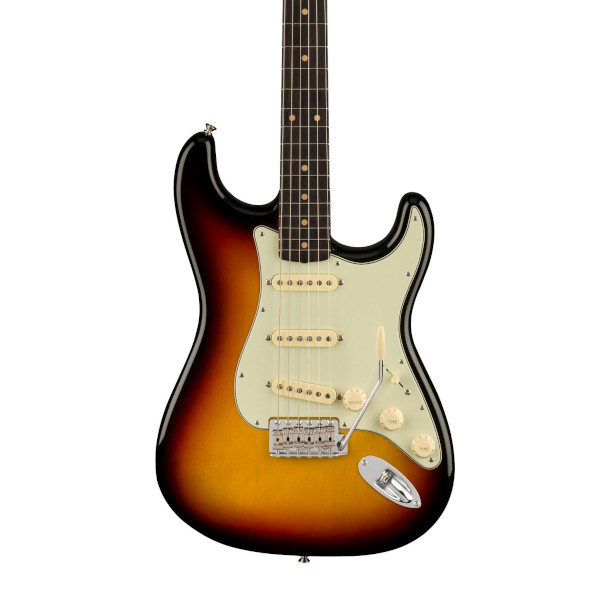
Fender brings the Sixties back to life with this, the American Vintage II 1961, making it an excellent option for those looking for vintage accuracy. It's available in three colours and exudes class and character. It might not be the top choice for shredders, but those who want to dive into the golden age of electric guitars should take a closer look.
Best Strat overall
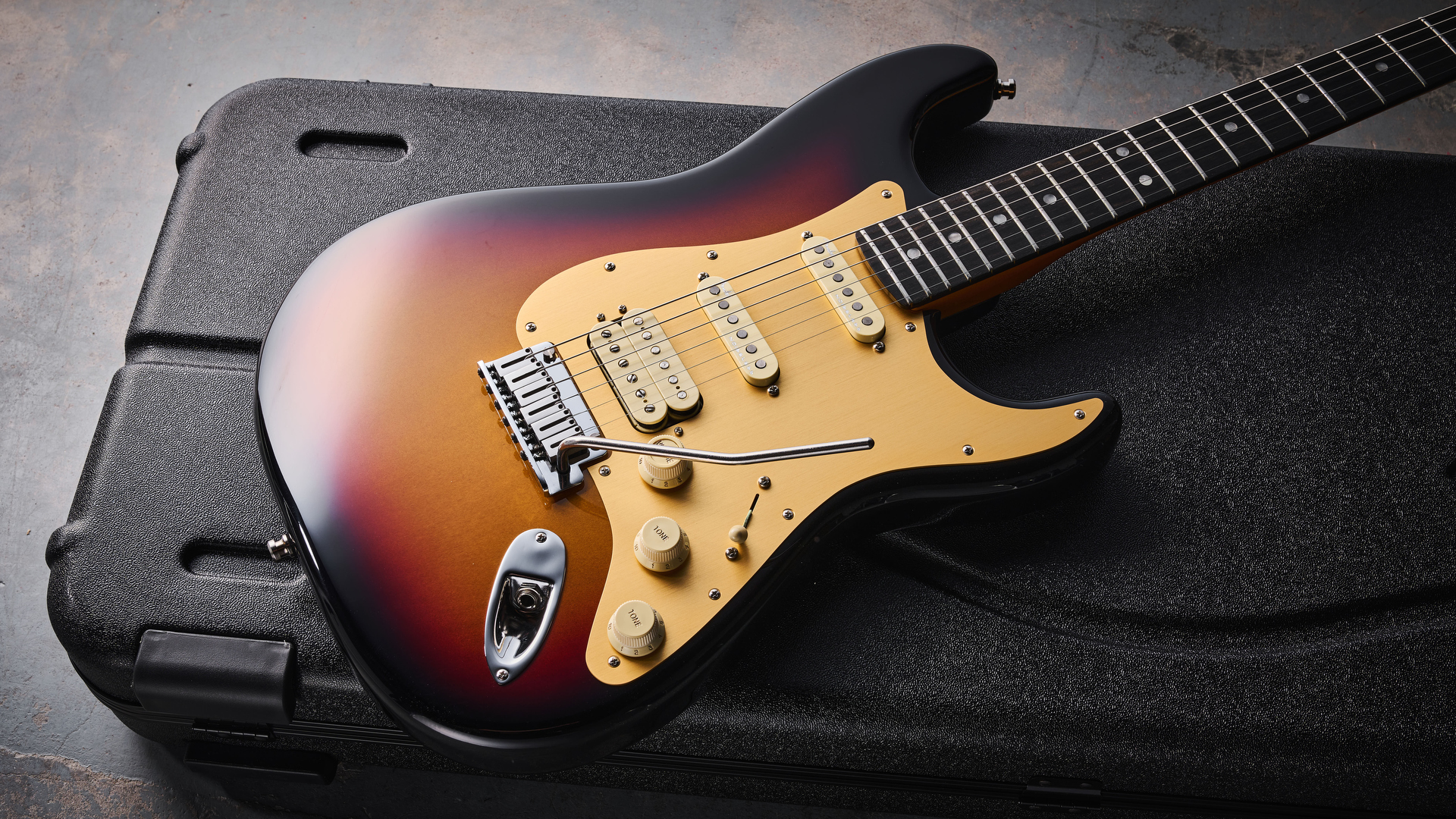
Specifications
Reasons to buy
Reasons to avoid
✅ Buy if you want my overall best Strat pick: Old school meets contemporary with the Fender American Ultra II HSS Stratocaster. It's a guitar that excels in every department and is my pick of the bunch.
❌ Avoid if you want a lighter Fender: There's no doubt the Ultra II is a heavyweight option, so it's not a model that's going to be comfortable for everyone.
Build quality rating: ★★★★½
Playability rating: ★★★★★
Sounds rating: ★★★★½
Overall: ★★★★½
The Ultra series is the guitar equivalent of a muscle car, and with the latest Ultra II, Fender has fine-tuned this thing into one of the best-playing Strats ever. Extra contouring on the back of the body gave my fretting hand access to all areas, and the 10" - 14" fingerboard radius offered me a combo of old-school chording comfort and super slick noodling during my testing.
Modern-sounding pickups work in cahoots with custom spec wiring including a treble bleed to prevent a muddy tone when you dial back the volume. Fender's versatile S-1 switch is also present, allowing the brand-new Haymaker humbucker to split into a single coil when needed.
You might expect to see a nitrocellulose finish at this price, but Fender has chosen a harder-wearing urethane finish for the body and neck. My review model was immaculately finished, with an evenly applied gloss throughout. This guitar isn’t about recreating the past - it’s built for the modern player.

"With its flattering playability, faultless build and cornucopia of tones, the American Ultra II Stratocaster HSS is a master of all trades. Fender should be bolder with the finish options when completing the trilogy, but this a pro-quality tool for hard-working musicians who like their guitar to do the heavy lifting."
Best on a budget
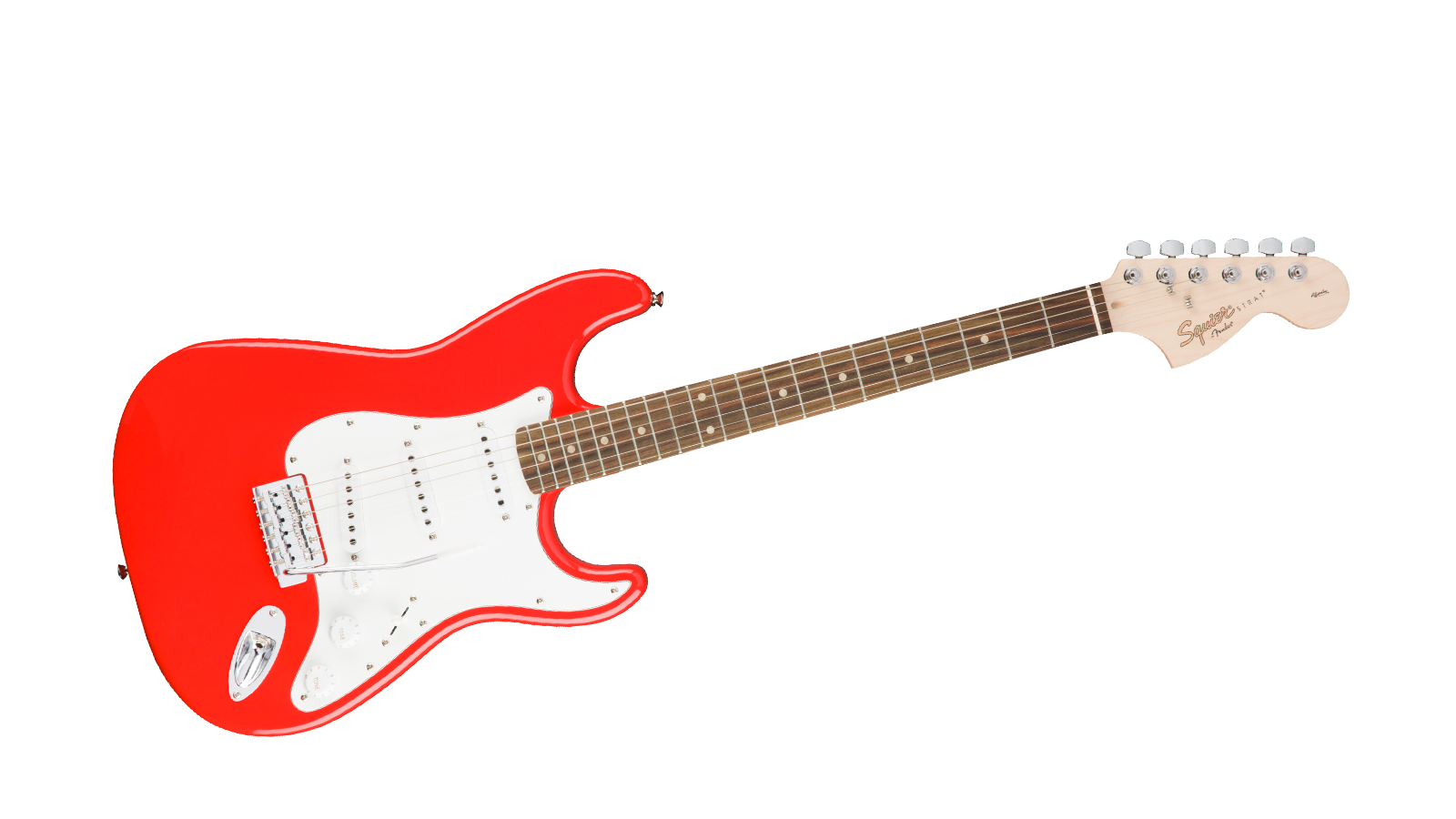
2. Squier Affinity Stratocaster
Our expert review:
Specifications
Reasons to buy
Reasons to avoid
✅ Buy if you’re in the market for your first Strat: If you’re looking to purchase your first-ever Stratocaster at an excellent price, the Squier Affinity is a great place to start.
❌ Avoid if you’re an experienced Strathead: If this isn't your first Strat rodeo, there are better examples elsewhere that'll give you the oomph you're looking for.
Build quality rating: ★★★★
Playability rating: ★★★★
Sounds rating: ★★★½
Overall: ★★★★
Available in SSS and HSS pickup layouts, the Squier Affinity packs in a lot of Strat goodness for such a low price. You're never going to mistake every Affinity in a lineup for a USA-built Fender, but these are serious giggable guitars that'll set you on the road to brand loyalty, just as crafty old Fender intended.
There's a great range of finishes available, but the best news is the comfortable C -hape neck and option of Indian Laurel or maple 9.5" radius fingerboard. If you like a bright, snappy response, choose maple. Yields get a tad more warmth from the Indian Laurel timber. 21 medium jumbo frets make for a playing experience that punches a few notches above the price tag.
Best for vintage tones
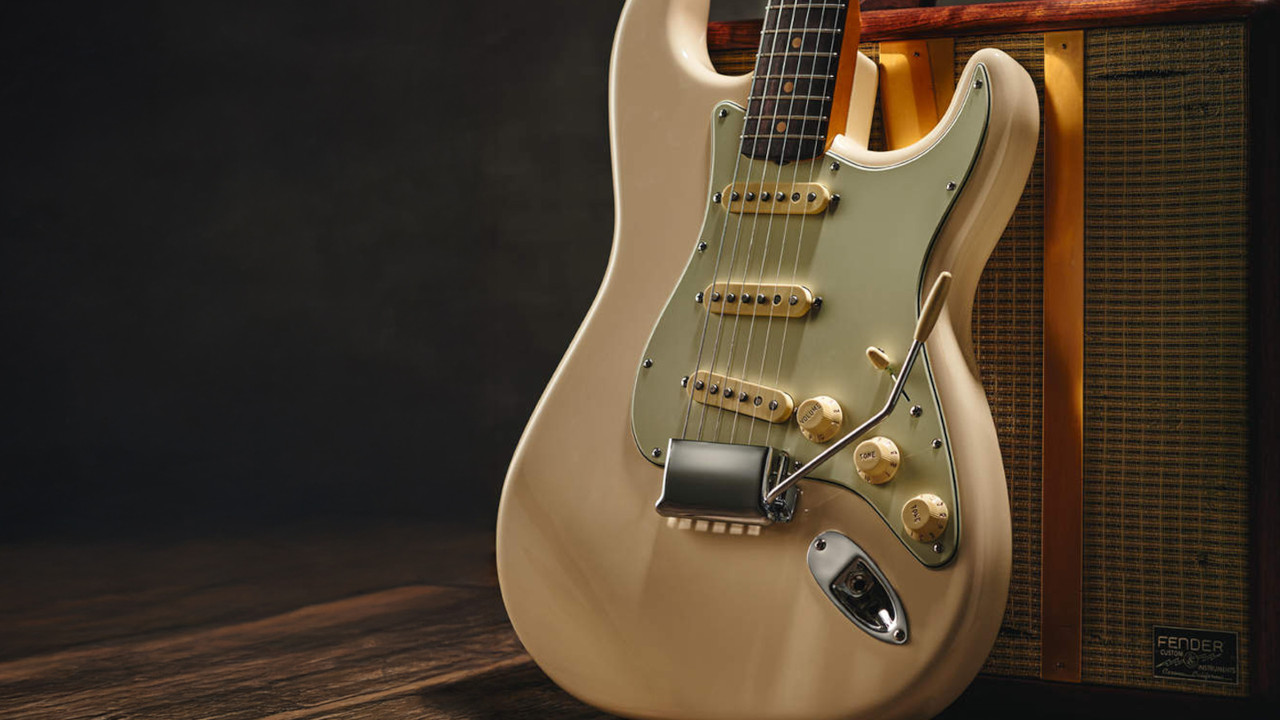
Specifications
Reasons to buy
Reasons to avoid
✅ Buy if you want a Strat packed with character: The tone on the American Vintage II 1961 is top-drawer and it's great to see a classic revived.
❌ Avoid if you live at the bottom of the fretboard: A throwback to the golden age, the Vintage II 1961 might not be your cup of tea if shredding is more your thing.
Build quality rating: ★★★★½
Playability rating: ★★★★★
Sounds rating: ★★★★★
Overall: ★★★★★
Fender’s American Vintage II series is the go-to choice for tone hounds who obsess over the intricate details that make guitar playing and collecting a joy. Built to period-correct specs, the American Vintage II series offers a lifeline for those who crave vintage accuracy but find the Custom Shop out of reach.
Among all the Stratocasters in the lineup, it’s the 1961 model that caught my eye. Often hailed as one of the greatest guitars of all time, Fender has done a stunning job bringing it back to life. From the slab rosewood fingerboard to the gloss nitrocellulose finish – designed to age beautifully over time – the ’61 is a sight to behold.
Available in 3-colour Sunburst, Fiesta Red, or Olympic White, the build quality is undeniable. The Pure Vintage ‘61 single-coils are packed with character, while the 7.25” radius fingerboard acts as a time capsule from the golden age of electric guitar.

"Pristine time-capsule Fender at prices to undercut the Custom Shop, the American Vintage II series is an inspired trip down memory lane that succeeds because the builds are great, the tones are awesome, and because the instruments are as relevant today as they were when they were first conceived."
Read more: Fender American Vintage II 1961 Stratocaster review
Best budget reissue
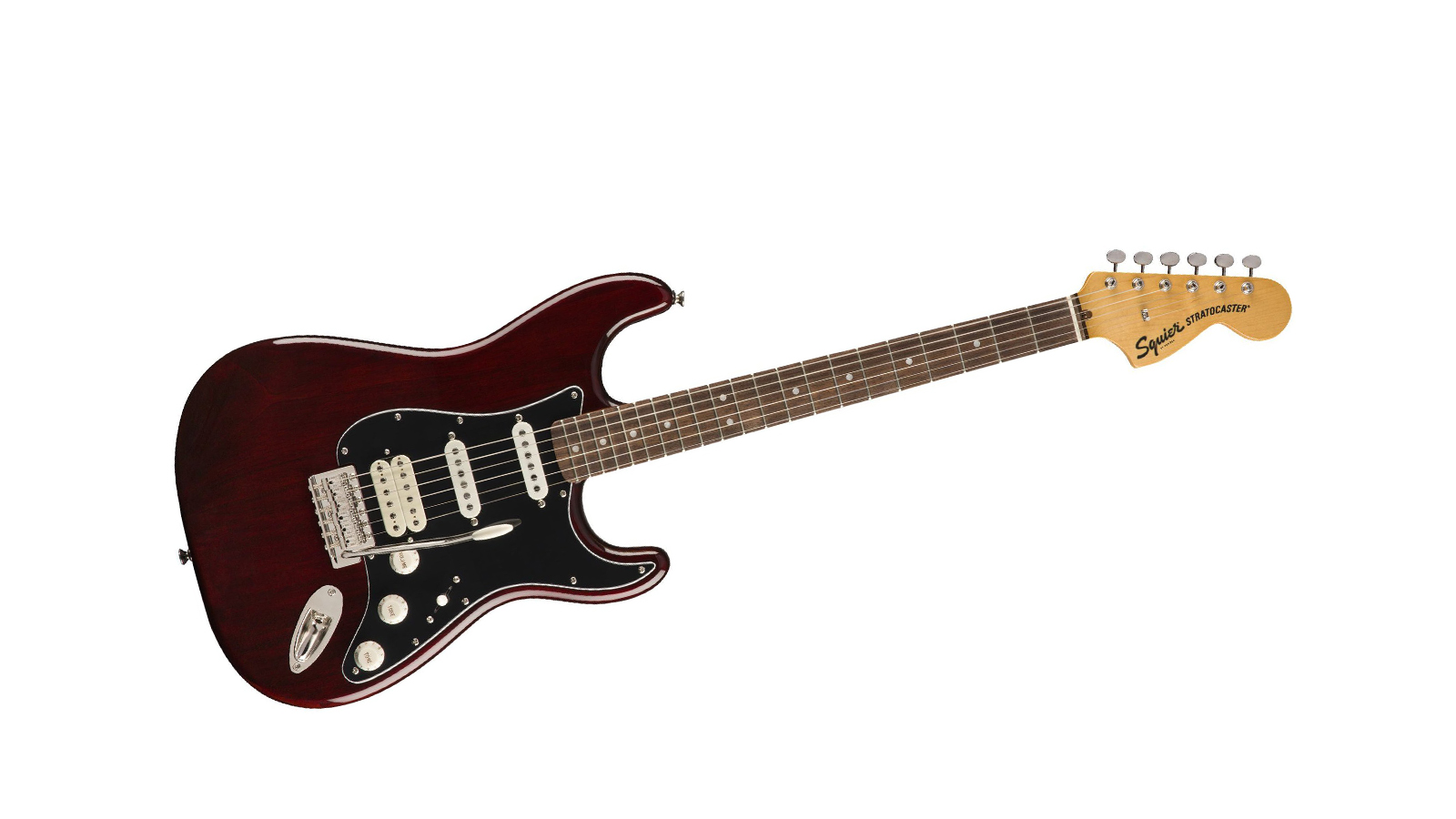
4. Squier Classic Vibe '70s Stratocaster HSS
Our expert review:
Specifications
Reasons to buy
Reasons to avoid
✅ Buy if you’re after an old school aesthetic: A great price for a awesome-looking and well-built bit of kit that brings the 70s back in style.
❌ Avoid if you want more bells and whistles: This Squier might have a cool 70s "Vibe" but I'd personally like to see a few more finish options in the mix.
Build quality rating: ★★★½
Playability rating: ★★★★
Sounds rating: ★★★★
Overall: ★★★★
It's no secret that Fender made some of its worst guitars in the 1970s. Anchor-heavy bodies, toffee apple-thick finishes... it wasn't pretty. The thing is, Fender guitars of the '70s looked really cool. The big CBS headstock shape screams hard rock, funk, leather jackets, getting juiced up on Spangles and hijacking your dad's souped-up Ford Cortina.
The Squier Classic Vibe ’70s Stratocaster HSS gives you all that old-school aesthetic loveliness at an impressively low price. The contoured poplar body plays host to a slim bolt-on maple neck with a tinted gloss finish for an aged vibe. The HSS branding means you get a humbucker in the bridge position and a pair of single coils in the middle and neck slots. An SSS version is available at the same price. Trust me, this Squier guitar is built way better than many of its original '70s American ancestors.
Best mid-priced option
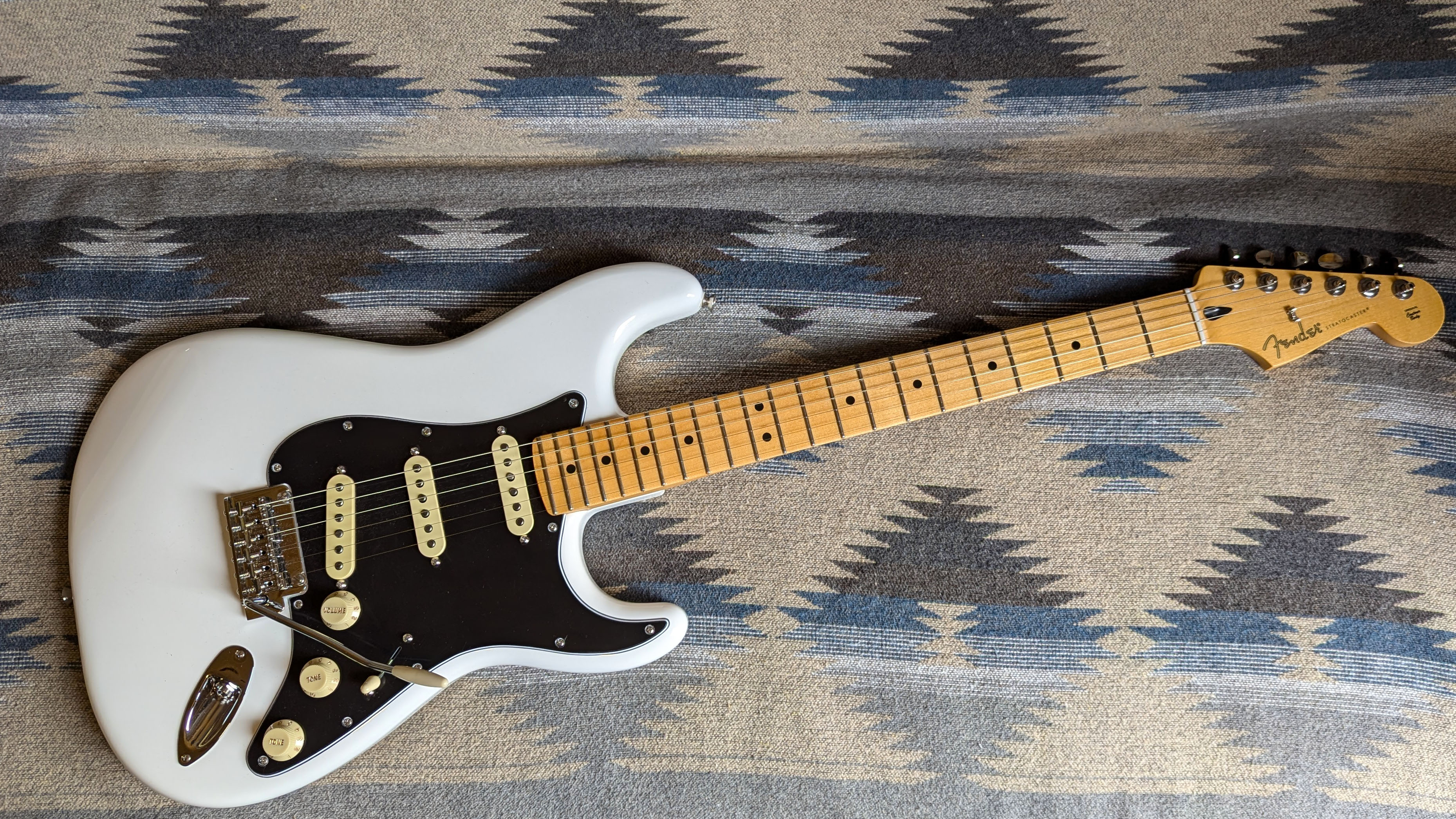
Specifications
Reasons to buy
Reasons to avoid
✅ Buy if you’re after a mid-price upgrade in the Player series: More of an evolution than a major overhaul, the Player II is comfortable and a joy to play
❌ Avoid if you want something a little different: The Player II is awesome, but its tweaks perhaps don't offer as many changes as you might like.
Build quality rating: ★★★★½
Playability rating: ★★★★
Sounds rating: ★★★★½
Overall: ★★★★½
The beloved Player Series has just received its much-anticipated sequel. Improving one of the best-selling ranges on the market is a daunting task, however, I'm happy to report that it doesn't disappoint.
It's fair to say the new Player II models are about small tweaks rather than a dramatic overhaul of specs, but I don't think that is a bad thing. The original Player series was already fantastic, and this new iteration feels like a natural evolution. After all, if it ain’t broke…
The biggest and most pleasing change for purists is the return of a rosewood fingerboard option – replacing pau ferro – now with rolled edges for improved comfort. There is an array of eye-catching finish options, with the new Birch Green model being a particular favourite. These new Player II models look, play and sound better than ever before.

"The enhancements to the original Player formula here are subtle in places but significant: the Player II Series feels like the centre of what Fender is and needs to be right now."
Read more: Fender Player II Stratocaster review
Best for playability
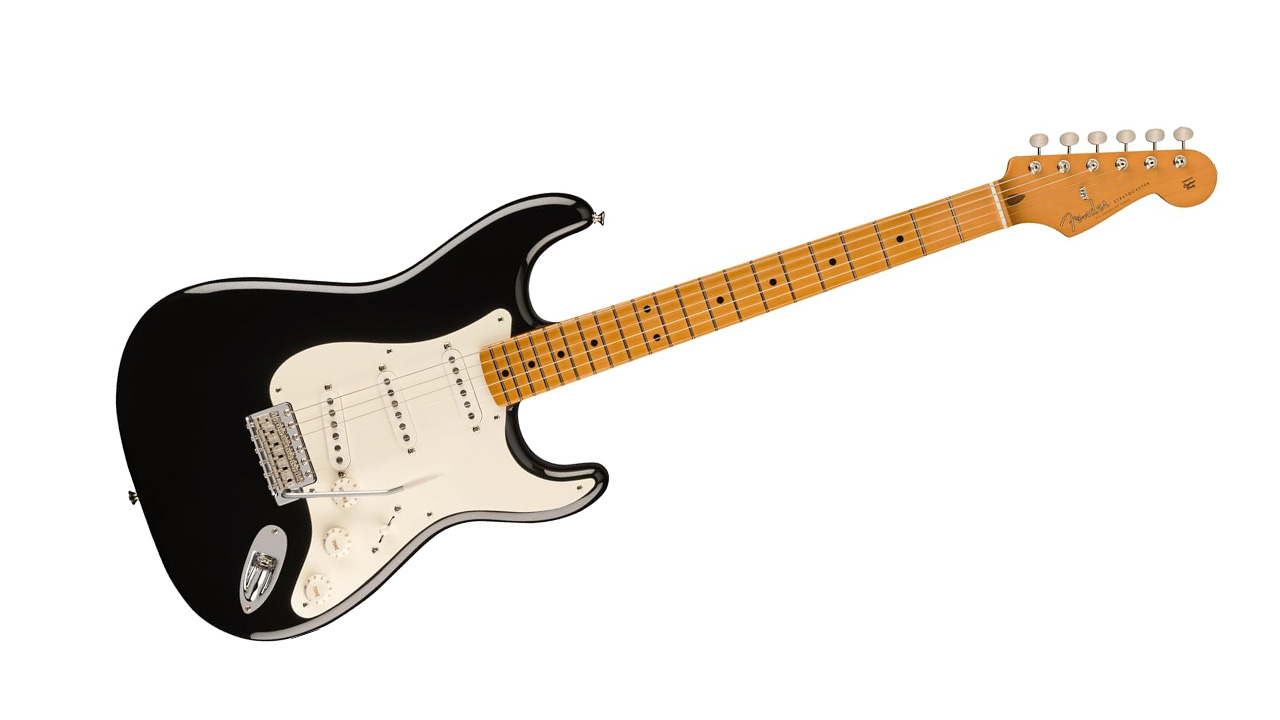
6. Fender Vintera II '50s Stratocaster
Our expert review:
Specifications
Reasons to buy
Reasons to avoid
✅ Buy if you want those classic Fender tones for a good price: The golden era of Fender is well and truly present on the Vintera II '50s Stratocaster and is a classy addition to the Fender range.
❌ Avoid if you want a larger fingerboard radius: It's all down to personal preference but some players may perform something a little larger than the 7.25" offered here.
Build quality rating: ★★★★
Playability rating: ★★★★½
Sounds rating: ★★★★½
Overall: ★★★★½
You might already know this, but the Vintera II range is all about delivering classic Fender tones, feel and aesthetics without the vintage price tag. Designed for players who love the golden era of Fender design, the Vintera II '50s Stratocaster takes you straight back to the era of surf rock, blues, and early psychedelia.
Spec-wise, this Strat takes plenty of inspiration from early models while keeping modern playability in mind. I found the soft V-shaped maple neck sat comfortably in my palm, avoiding the discomfort and hand fatigue that can come with sharper, hard V-shaped necks. The 7.25" radius fingerboard delivers a classic vintage feel, while 21 vintage-tall frets provide ample room for expressive bends.
The three '50s-voiced single-coil pickups deliver that bell-like chime and clarity associated with the decade, all running through a traditional five-way switch. A six-saddle vintage-style synchronised tremolo rounds out the package, keeping things pretty traditional.
Best for noiseless pickups
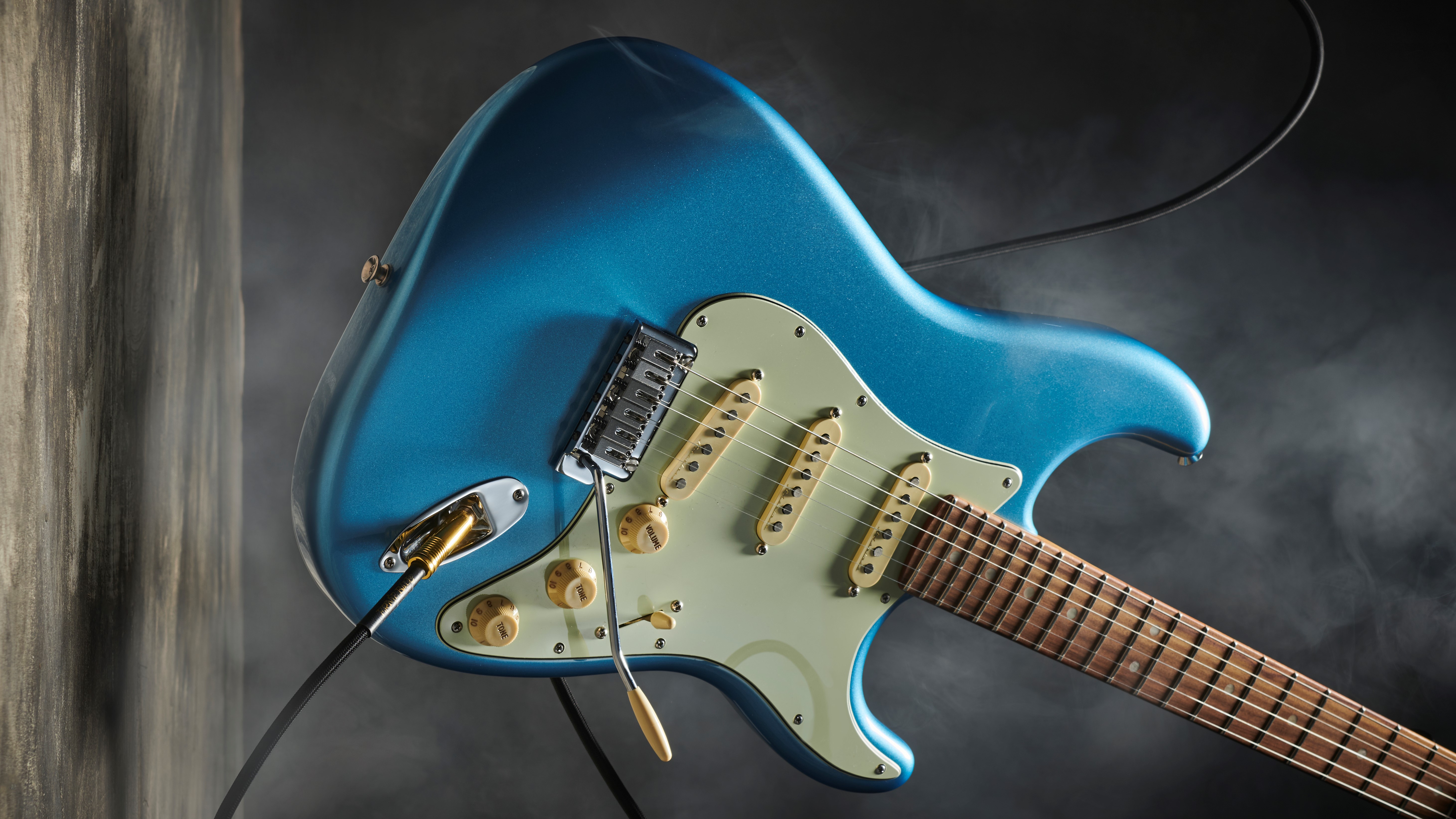
Specifications
Reasons to buy
Reasons to avoid
✅ Buy if you want a refined sound: With three noiseless pickups, the Player Plus Stratocaster sound terrific and the wide-range humbucker helps deliver expansive tones.
❌ Avoid if you want something a bit more traditional: The points mentioned above may not be what you're looking for so another pick from this list might be more up your street.
Build quality rating: ★★★★
Playability rating: ★★★★½
Sounds rating: ★★★★½
Overall: ★★★★½
Fender's Player series of Stratocasters has been one of their most successful to date, acting as an affordable, high quality point of entry for those who want the Fender logo on the headstock. The Player Plus series takes that to the next level.
One of the main changes in the Player Plus series is to the electronics. This setup may look like that of a traditional Strat, but the three pickups incorporated in a Player Plus Stratocaster are noiseless, single coil sized humbuckers. They still produce a pretty traditional Strat-like tone, but with some extra refinements. This edit to the traditional design makes the Player Plus series great for the modern guitarist. A wide range humbucker is also available in the bridge position - offering expansive, vast tones with some extra power.
The other main difference with the Player Plus series is the updated 12" fingerboard radius. Unlike the standard Player series – with its fairly generic 9.5" radius – the Player Plus is a guitar designed to make string bending and general playing so much easier. The neck profile is still the modern 'C', however - so don't worry too much about this guitar feeling alien. To top it off, there's a host of new finishes too.

"With a choice of bold and smart new finishes and the high-performance vibe of a flatter fingerboard radius, the Player Plus Series Strat extends the potential of Fender’s most successful range and offers gigging players an instrument that offers classic Fender tones and the ability to modernise them."
Best budget USA Strat
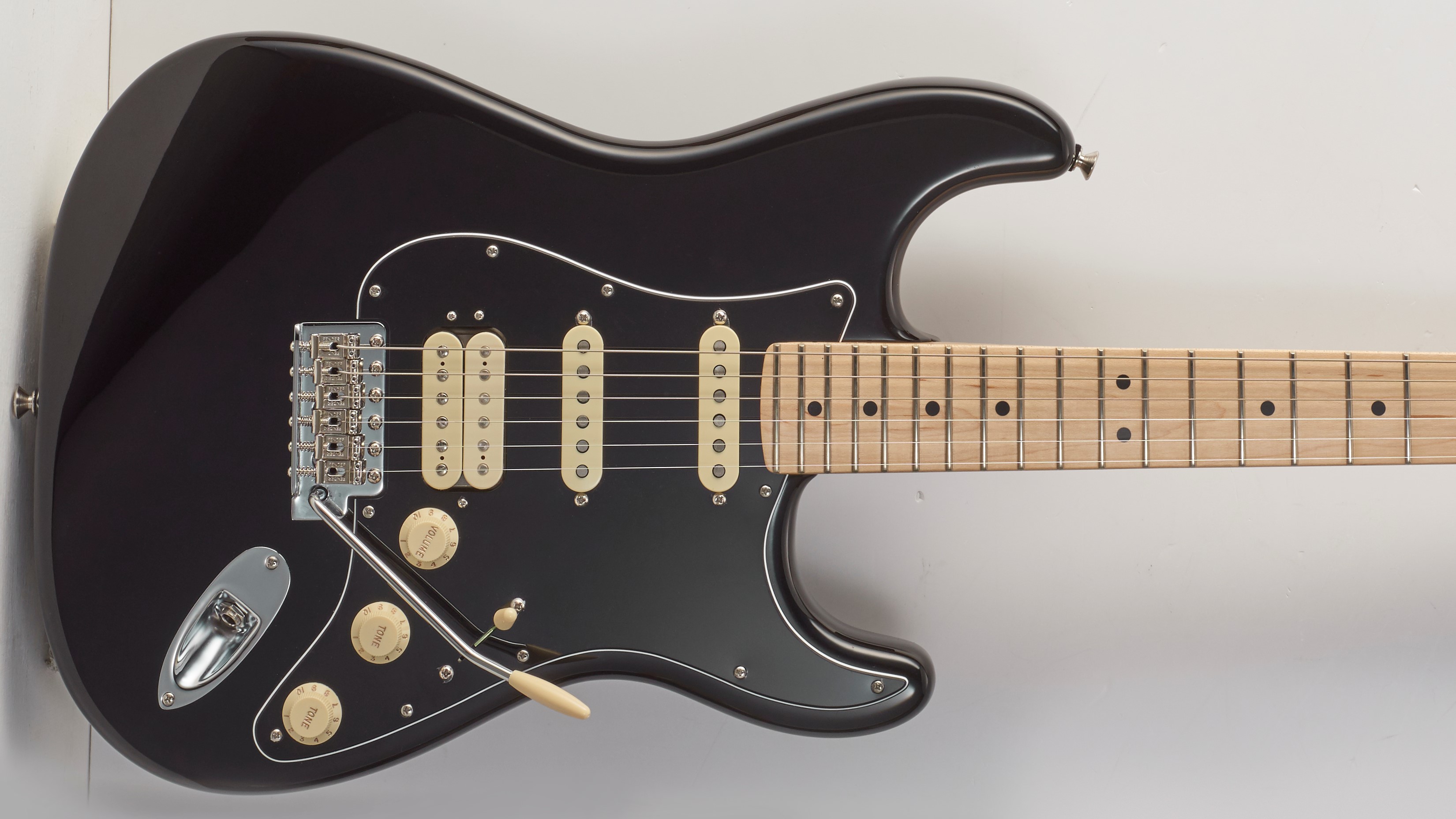
Specifications
Reasons to buy
Reasons to avoid
✅ Buy if you want an affordable, US-build Strat: Feature rich and well worth the money if a US-build Strat is top of your shopping list.
❌ Avoid if bent steel saddles aren't your thing: No, they won't be to everyone's tastes and I found them to be slightly uncomfortable.
Build quality rating: ★★★★½
Playability rating: ★★★★
Sounds rating: ★★★★½
Overall: ★★★★½
The Performer is the most affordable USA-built Fender Stratocaster you can currently buy. The thing is absolutely bursting with features including the Greasebucket tone circuit that allows you to dial out the treble without causing muddiness or losing gain.
There's also a push/pull function that gives access to a Tele-style neck and bridge pickup combo, or all three pups engaged. Speaking of pickups, the Yosemite single coils were specifically designed for this model. Note: there's also an HSS version in the catalogue with Fender's Double Tap humbucker in the bridge position.
I found playability to be enhanced with a pleasantly plump Modern C neck profile, 9.5" fingerboard radius, and 22 big-ass frets. The neck has a satin urethane finish which kept my sticky mitts moving even with stage lights melting me down.

"The American Performer has just enough playability and extra tonal options to make it worth spending that little bit more on a US-model over its Mexican-built rivals."
FAQ
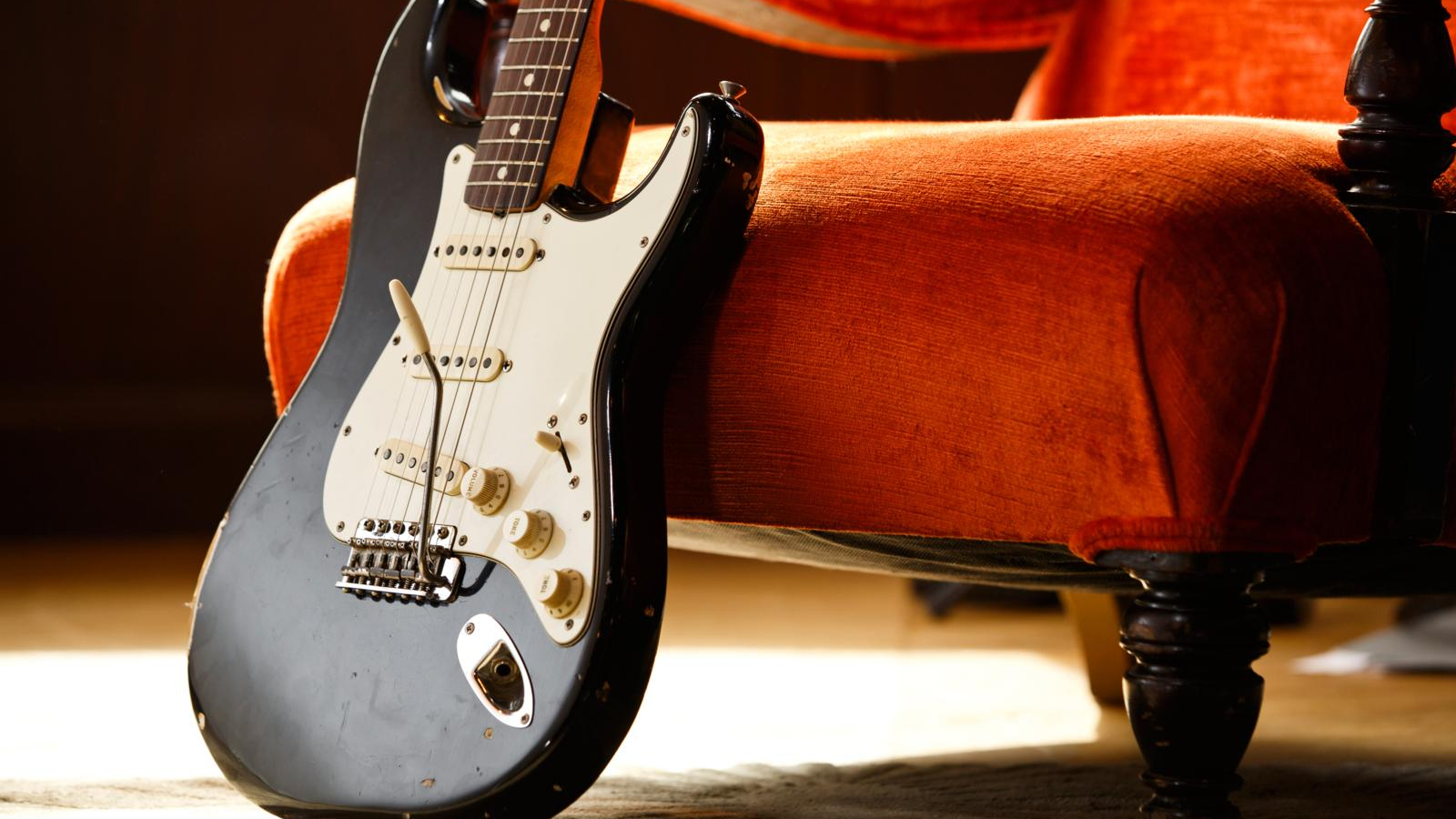
What should I know when buying a Strat?
The Fender Stratocaster has had almost 70 years of tweaking and tinkering so when it comes to buying a new guitar, there's quite a lot to consider, including the style of music you'll be playing. I've answered some common question below which will hopefully help you pick up a new Strat.
What are the best pickups for Stratocasters?
Do you want something with low output pickups that give you a nice clear, clean sound, or something with hotter pickups that will break up a little quicker? Many players find that a humbucker in the bridge position gives them the best of both worlds as they can switch from a big, beefy sound to a more delicate, chimey tone at the flick of a switch. The Strat has so many configurations and they all sound killer, but it's definitely worth putting some thought into the tones you'd like to achieve, and how best you'll achieve them.
On retro-inspired models like the Squier Classic Vibe and American Vintage II, you’ll find vintage voiced pickups that are low output and great for blues and surf rock. The lower output comes from the strength of the Alnico magnets, which degrade naturally over time. This is why a genuine vintage instrument will sound low output, and to some ears, warmer. Many manufacturers replicate vintage pickups using new parts, emulating the winding techniques, and artificially aging the magnets to give them the same sought-after sound.
Modern pickups are higher output for a couple of reasons. First, the magnets haven’t had time to age, so they’re still at their maximum strength when you get them. They usually have more windings and they’re more uniform, as they’re machine operated rather than wound manually. This gives modern pickups a thicker tone than their vintage counterparts, at the cost of some brightness, a characteristic seemingly preferred by modern guitarists. That said, in comparison to a P90 or a Humbucker any Strat single coil pickup will sound relatively low output.
Does neck profile matter on a Strat?
Neck profiles can be pretty important too - how comfortable a guitar is for you will have a huge impact on how much you want to pick it up. Finding the best Stratocaster for you will be just as much about how it feels, as well as how it sounds. Necks tended to be thicker in the 50s, and got thinner in the 60s. Their most popular one these days is the Modern C profile, which lends itself nicely to any and all playing styles.
The profile refers to the shape of the neck as you look down its length, with a letter denoting its curvature. ‘C’ necks are the most popular on Strats, as you get the best and even profile that’s great for bending and playing fast licks. ‘D’ profile necks are considered to be much faster playing, at the expense of some feel whilst bending, while ‘V’ profile necks feel slightly slower thanks to the ‘hump’ in the middle, which also gives you more grip when doing those massive blues bends.
They’re pretty rare on Stratocasters but you can also get a ‘U’ shaped neck, affectionately known as the ‘baseball bat’. These hefty profiles were often found on the earliest guitar models, and are can be unplayable for those with smaller dimensions.
What do I need to know about Strat fingerboards?
The guitar’s fingerboard has a huge impact on how it looks, but it also imparts a little tonal flavor too. Maple tends to be a little brighter than rosewood, or pau ferro as is often found at the more budget end of things.
There’s also the fingerboard radius to think about. More vintage models are likely to feature a 7.25” radius, and more modern guitars tend to have either 9.5”, 12” or a compound 10-14”. While it all boils down to personal preference, the general consensus is that a smaller radius lends itself better to chord work, and a larger, or wider radius can be more comfortable for lead players. This can all be adjusted with action tweaks and playing style though.
Should I worry about buying a Strat online?
Concerned about buying a Strat online without playing it first? You needn’t be. Online music instrument retailers such as Thomann, Guitar Center, Sweetwater and Musician’s Friend offer hassle-free returns as standard, so you can purchase a Strat, play it in the comfort and privacy of your home and, if it’s not for you, send it back with ease. Most offer between 30-45 days to return an item, as long as it’s in original condition.
It's also worth noting that myself and the MusicRadar team will always point you in the direction of trusted websites.
How we chose the best Stratocasters
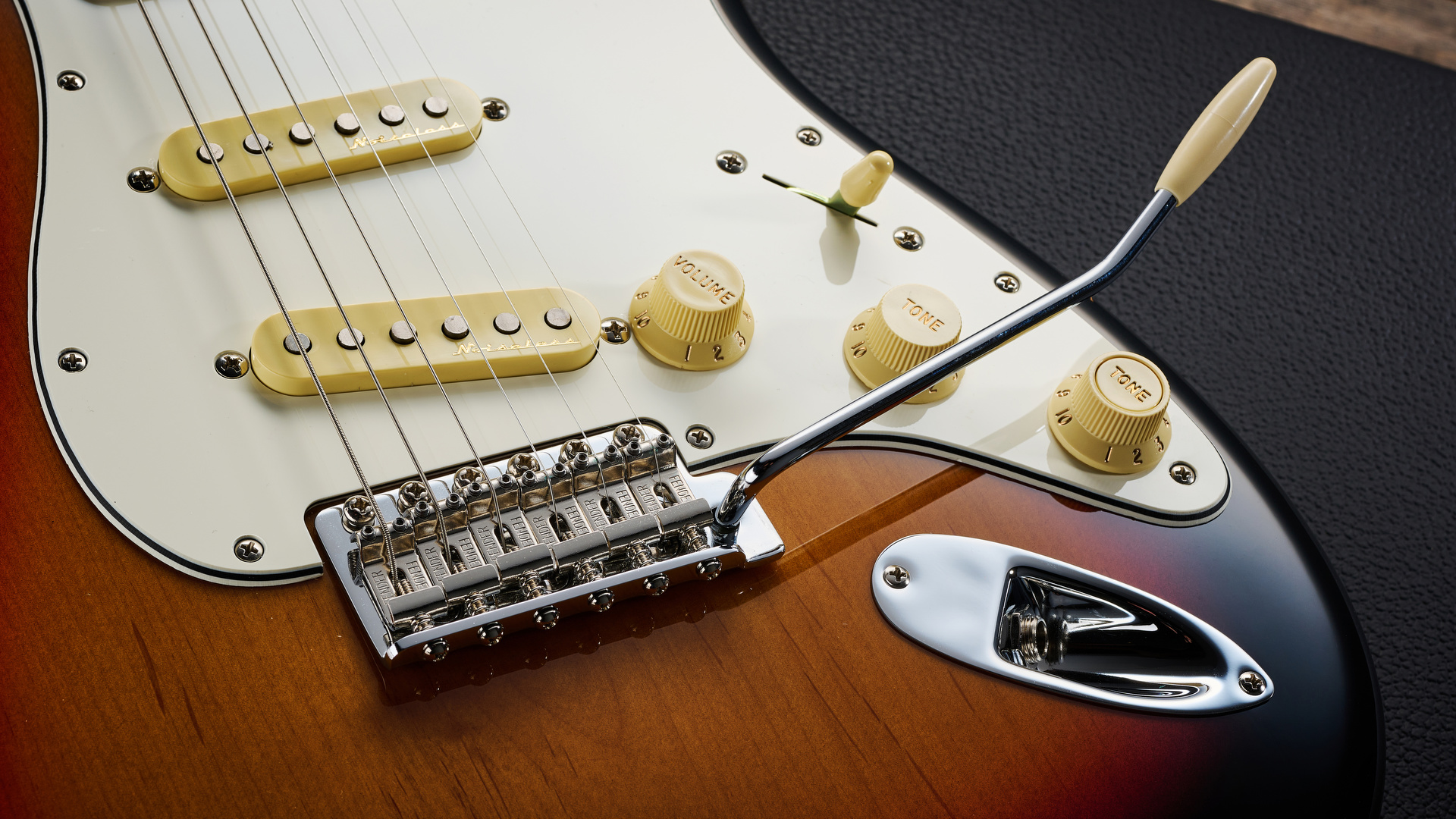
Here at MusicRadar, we are experts in our field, with many years of playing, creating and product testing between us. We live and breathe everything music gear related, and we draw on this knowledge and experience of using products in live, recording and rehearsal scenarios when selecting the products for our guides.
When choosing what we believe to be the best Stratocasters available right now, we combine our hands-on experience, user reviews and testimonies and engage in lengthy discussions with our editorial colleagues to reach a consensus about the top products in any given category.
First and foremost, we are musicians, and we want other players to find the right product for them. So we take into careful consideration everything from budget to feature set, ease of use and durability to create a list of what we can safely say are the best Stratocasters you can purchase right now.
How we test
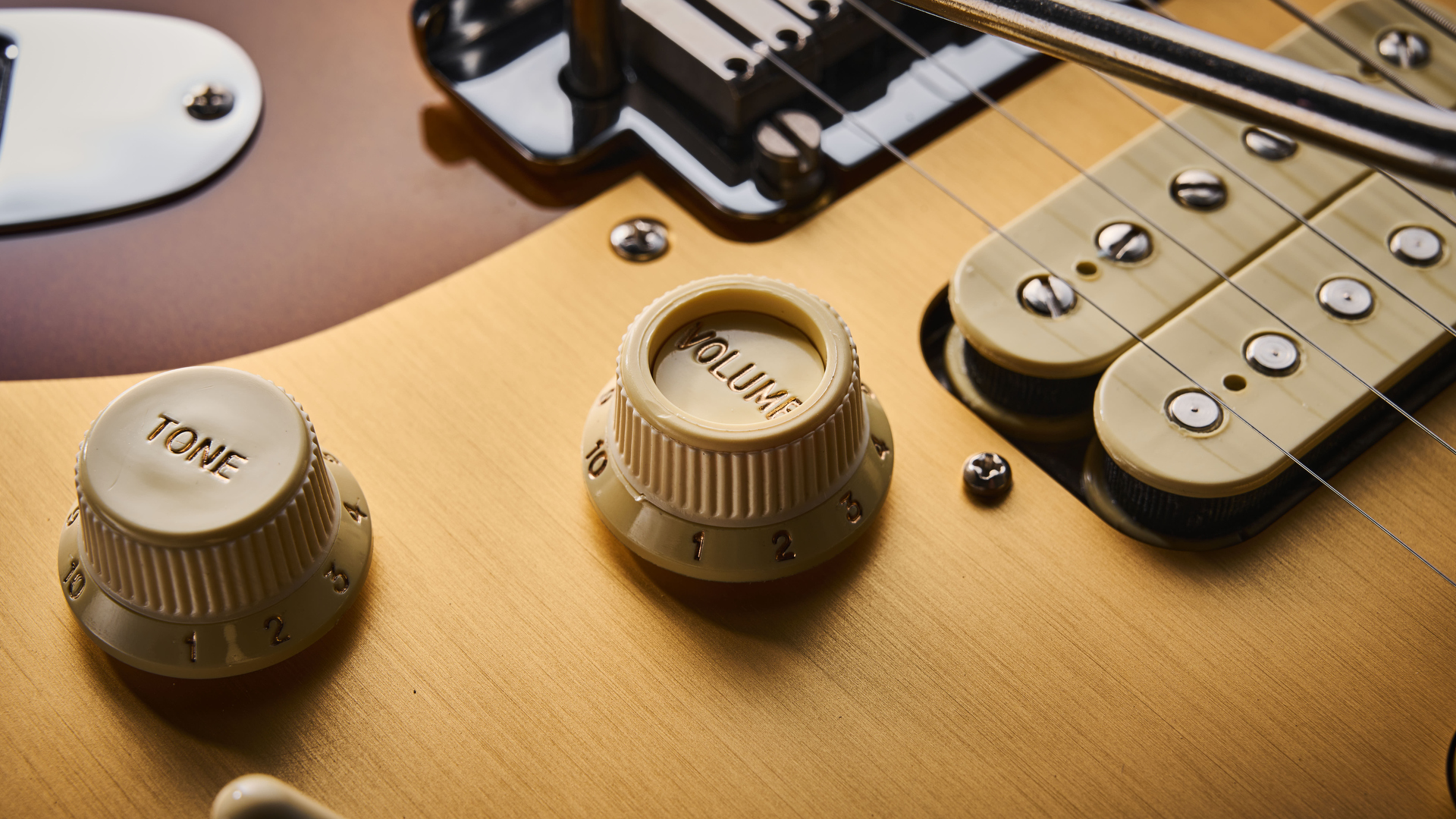
Reviewing guitars is always going to be subjective as some models will suit some players over others. For this guide, myself and the wider MusicRadar team put our own preferences aside so we could take a broader look at what each Strat offered. But it's worth noting that no matter the cost of the guitars we always place importance on a number of factors.
Build quality is the first thing we take a look at. We want to ensure that the guitar is robust enough to offer you the best playing experience. If there's a weakness, we'll let you know.
The electronics, tuners and bridge are next, and we make sure that everything works as intended, for example do the tuners move smoothly, is the tremolo action too soft and are there any issues with the bridge and saddles. Once this is done, we pay attention to the finish to ensure it's in line with the instrument's price.
Once those checks are in place, it's time for playing - and the most important thing is what the Strat sounds like straight out of the box. Subjectivity again comes into play here, but we'll cross reference our experience with the manufacturer’s intentions and let you know if there's any added points of interest we find while playing.
While playing, we'll also take into consideration how comfortable the Strat is to play, how it feels and if there are any issues with the frets.
Find out more about how we test music gear and services at MusicRadar.
Why trust us?
✔️ More than 9,500 reviews on-site
✔️Over 17 years of product testing
✔️ 2.9 million monthly users globally
MusicRadar has been in operation from 2007 and has been helping people on their musical journey since then. No matter if you're a producer, guitarist, drummer, keyboardist or DJ you'll find useful information across the site, while our team of experts and industry pros regularly put instruments and gear through their paces to help you make an informed decision.
Along with our in-depth buyer's guides, MusicRadar also provides all the latest news, reviews and how-to features to provide as music information on the music world as possible.
Thanks to you, we receive three million visitors per month, making us the one-stop shop for music makers and lovers worldwide - and we also feature content from our magazine titles such as Future Music, Computer Music, and eMusician.
Meet the experts
MusicRadar's got your back

Ed Mitchell was Reviews Editor on Total Guitar magazine from 2003, and his guitar-modding column, Ed’s Shed, appeared in print on both sides of the Atlantic (in both Total Guitar and Guitar World magazines). He was the Editor of The Blues Magazine from 2012-16, and a contributor to Guitarist, Classic Rock and Louder. He died in October 2022, aged 52. Between them, the websites Guitar World, Louder and MusicRadar host more than 400 of his articles and dozens of guitar reviews – and that’s just the ones that made it online.

Ross has been a music lover and guitar player since the age of 8. He has spent the five years since graduating from university working in music retail, selling guitars, amps and more. Ross is particularly interested in electric guitars, pedals and amplifiers and his current rig includes a trusty 2009 American Standard Stratocaster and Vox AC30S1 with a few Walrus Audio and Way Huge pedals in between.

After spending a decade in music retail, Richard is now a freelance writer for MusicRadar, Guitar Player, Guitar World and Reverb, specialising in electric and acoustic guitars, bass, and almost anything else you can make a tune with. When his head’s not buried in the best of modern and vintage gear, Richard runs a small company helping musicians with songwriting, production and performance, and plays bass in an alt-rock band. Otherwise, you'll probably find him out walking the dog!

Matt has been recording bands since the mid-noughties, cutting his teeth with an M-Audio M-Track 2 and a copy of Cubase on Windows XP. Since then he's used countless audio interfaces to record music for bands across the UK, covering everything from djent to jazz. As a MusicRadar writer, Matt has reviewed 15 audio interfaces in the past year alone, and over 50 different products including guitars, amps, and pedals. Before becoming a writer, he spent five years in the music retail industry working for Dawsons Music and Northwest Guitars, providing expert advice to musicians. He’s currently studying Music Production at Spirit Studios in Manchester, UK.
Latest updates
13/02/25: The guide has been updated with three new products: Fender Vintera II '50s Stratocaster, Fender American Ultra II HSS Stratocaster and the Fender American Vintage II 1961 Stratocaster. Expert verdict boxes have been added to product entries where applicable and "At a glance" entries have been added to all products highlighting clear pros and cons. We've also added a new section detailing why you can trust MusicRadar, as well as adding a "meet our experts" section so yu can get to know who has contributing their expertise to this guide.
Read more:
- Stratocaster vs Telecaster: which is right for you?
- Our pick of the best Fender Telecasters you can buy today
- The best Strat-style guitars under $/£1,000
- The best blues guitars you can buy right now
- Our pick of the best electric guitars to suit all budgets
- Nail that twang with the best Gretsch guitars
Want all the hottest music and gear news, reviews, deals, features and more, direct to your inbox? Sign up here.
- Matt McCrackenJunior Deals Writer
- Ross Holder
- Richard Blenkinsop